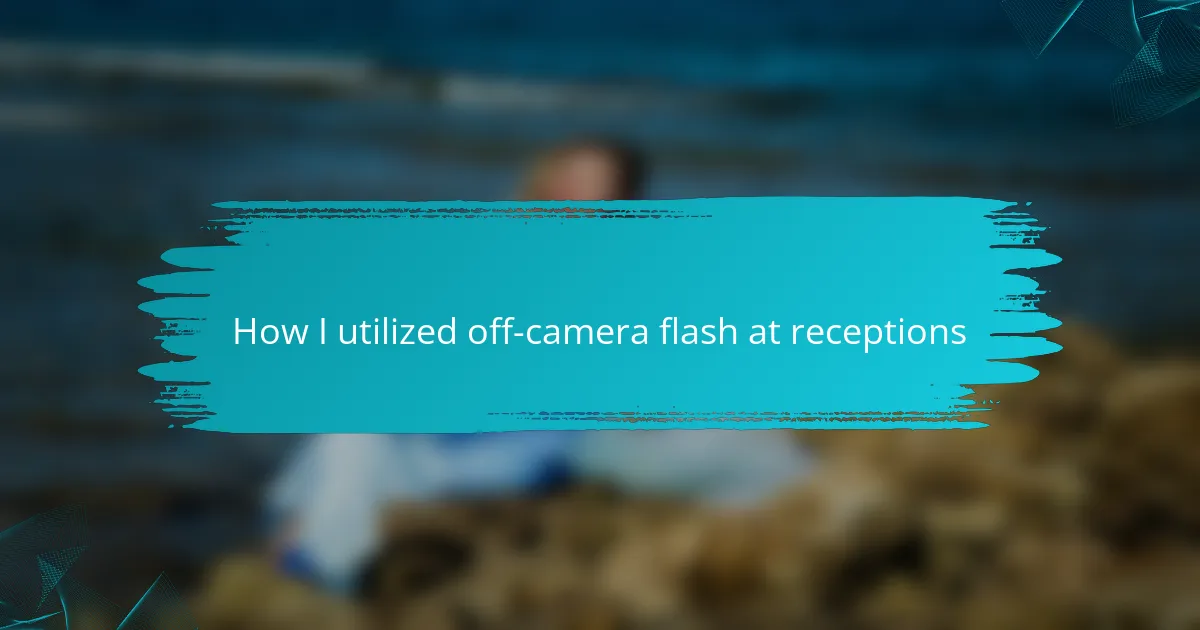Key takeaways
- Off-camera flash enhances creativity in wedding photography by providing extensive control over light and shadows.
- Techniques like “dragging the shutter” and “bouncing the flash” allow for dynamic and flattering lighting effects.
- Proper setup and positioning of the flash can dramatically improve image quality, capturing the emotional moments beautifully.
- Using off-camera flash offers greater versatility and depth in images compared to on-camera flash, resulting in a more artistic approach.
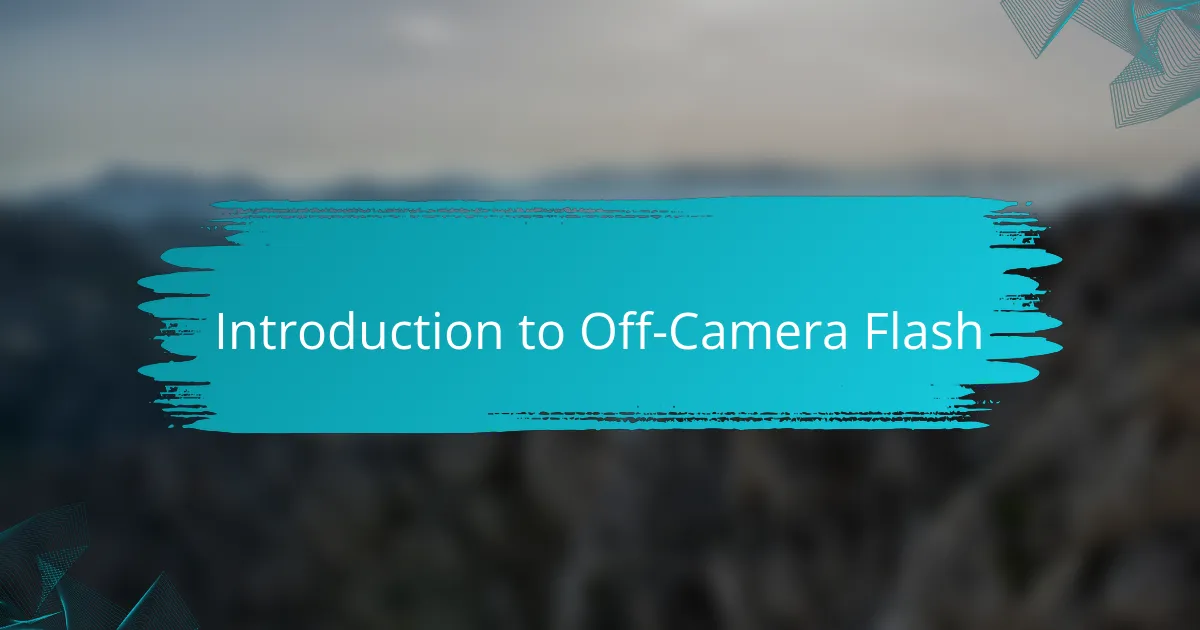
Introduction to Off-Camera Flash
Off-camera flash is a game changer in the world of wedding photography, especially during receptions. I remember the first time I decided to step away from the standard on-camera flash. The moment I fired that off-camera flash, the atmosphere shifted dramatically; the lighting became more dynamic, and the images felt alive. I quickly realized that mastering this technique not only captured more beautiful moments but also added an artistic flair to the storytelling.
Using off-camera flash allows for greater creativity in lighting and composition. You can create depth, control shadows, and highlight specific areas of your image, which simply isn’t possible with on-camera flash. I’ve found that adjusting the placement of the flash can yield surprisingly different effects, which adds an element of excitement to each shot.
Here’s a comparison table to highlight some key differences in using on-camera flash versus off-camera flash in wedding reception settings:
| Aspect | On-Camera Flash | Off-Camera Flash |
|---|---|---|
| Light Control | Limited | Extensive |
| Shadow Control | Harsh Shadows | Soft Shadows |
| Creative Freedom | Minimal | High |
| Background Separation | Less Effective | More Effective |
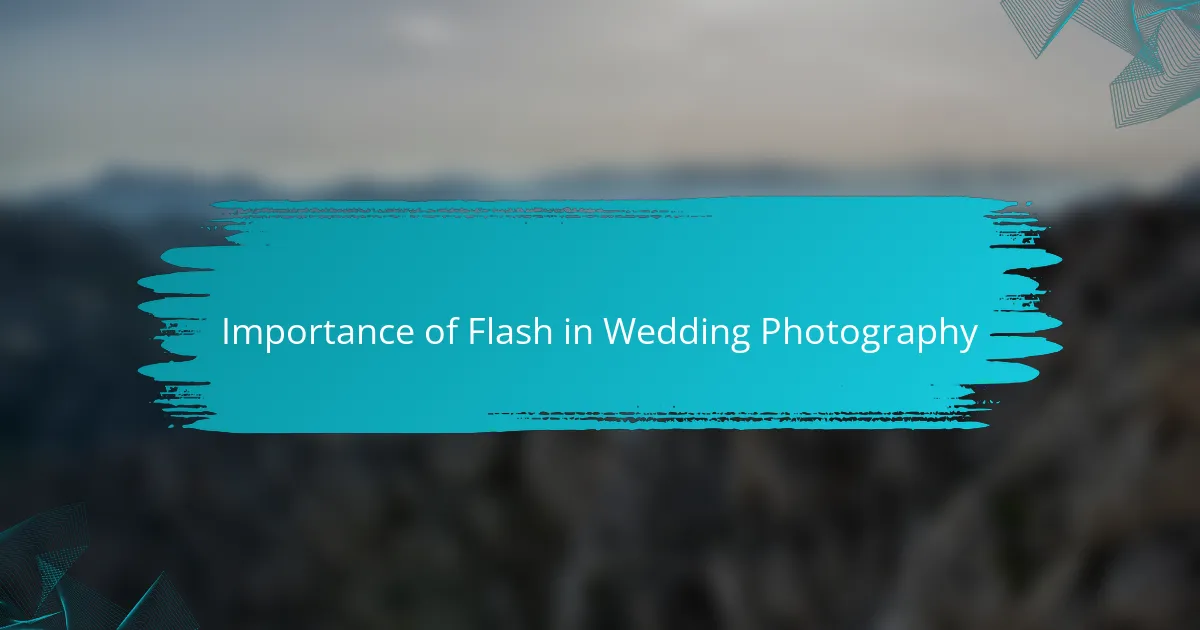
Importance of Flash in Wedding Photography
Flash plays a crucial role in wedding photography, especially during receptions where lighting can be less than ideal. I remember my first wedding where the venue was dimly lit, and without my off-camera flash, many moments would have been lost. The energy on the dance floor is electrifying, and capturing those spontaneous moments is only possible with the right lighting.
When I utilized off-camera flash at a recent reception, I was able to highlight the couple’s joyful expressions while maintaining the warm ambience of the surroundings. This not only elevated the quality of my images but also allowed me to tell a richer story of the celebration. Here are a few reasons why flash is essential in wedding photography:
- Improved Lighting: Enhances the details and colors of the scene, making images pop.
- Dynamic Range: Provides depth by allowing the photographer to play with shadows.
- Candid Moments: Freezes movement in low light, capturing the joyous energy on the dance floor.
- Consistent Results: Ensures even lighting across different reception areas, maintaining a cohesive look in the album.
- Creative Control: Offers opportunities for artistic effects and unique compositions that can set your work apart.
These aspects illustrate why mastering off-camera flash can elevate your wedding photography game to another level.
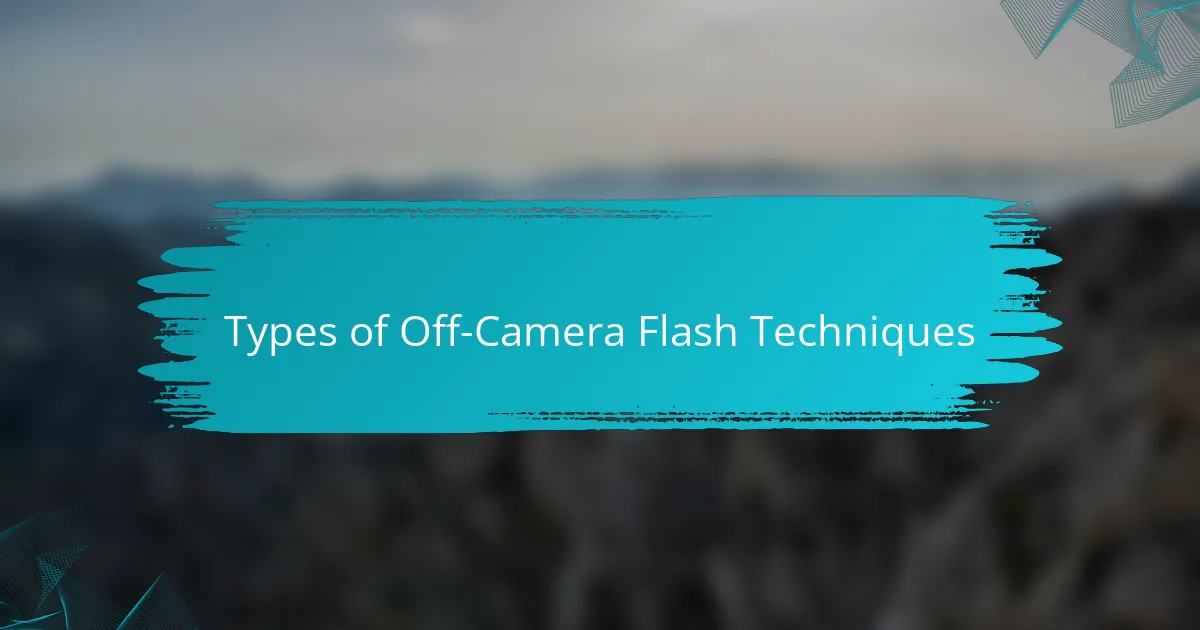
Types of Off-Camera Flash Techniques
When it comes to off-camera flash techniques at receptions, I’ve found that the key is to adapt to your surroundings and the mood of the event. For example, I often use a technique called “dragging the shutter,” where I lower the shutter speed while firing the flash. This allows me to capture the ambient light while still freezing any action, which adds a dynamic look to dance floor shots. Just the other night, I used this method at a lively wedding and caught the vibrant lights and happy faces, perfectly blending the atmosphere.
Another technique I frequently utilize is “bouncing the flash.” By angling the flash toward a ceiling or wall, I can create soft, diffused lighting that flatters the subjects’ faces. This approach helped me achieve beautifully lit group portraits during a recent twilight reception where harsh flashes could’ve overshadowed the tender moments. My clients were thrilled with how soft and romantic their photos turned out, proving that sometimes the subtleties make all the difference.
- Dragging the Shutter: Balance the flash with ambient light for dynamic shots.
- Bouncing the Flash: Direct light towards surfaces for softer, more flattering illumination.
- Use Colored Gels: Change the flash color to match the ambient light for creative effects.
- Backlighting: Position the flash behind subjects to create a halo effect that enhances the mood.
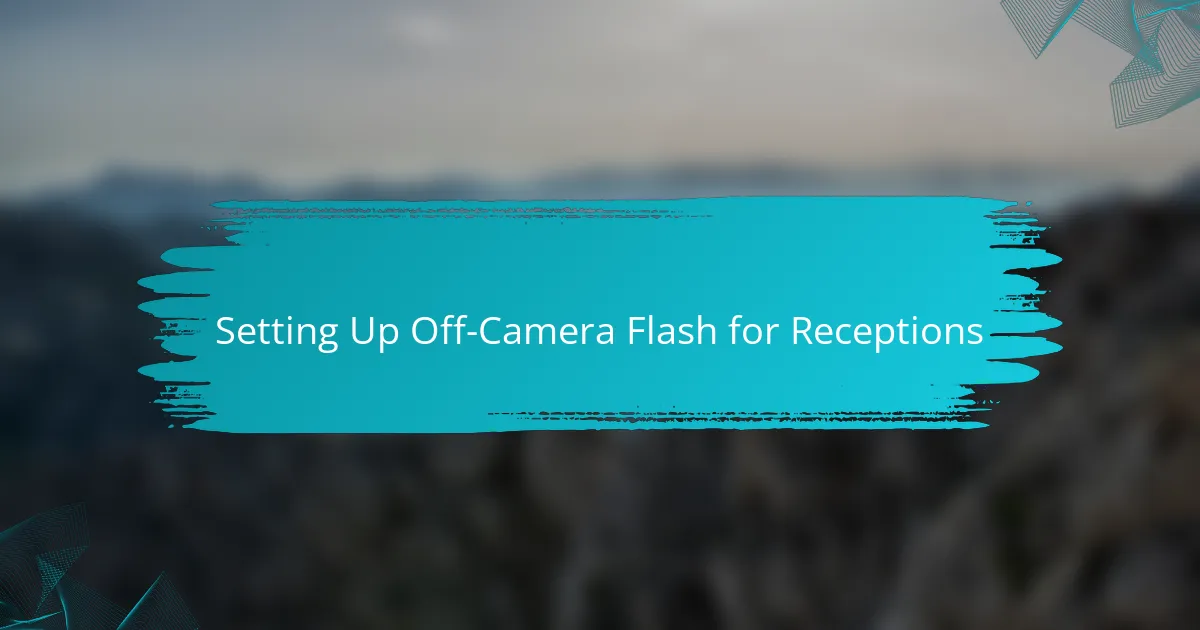
Setting Up Off-Camera Flash for Receptions
Setting up off-camera flash for receptions can be one of the most exciting aspects of wedding photography. I remember my first attempt at it; I felt a mix of excitement and nervousness as I located the perfect spot for my flash. I usually start by placing the flash on a light stand, a few feet from the couple, and slightly above their eye level. This simple adjustment can dramatically change the light quality and make the couple pop against the background.
Once I have the flash positioned, I take a moment to assess the overall lighting in the room. I often ask myself, “How can I use this overhead light to my advantage?” For example, in dimly lit receptions, I typically increase the flash power and trigger it wirelessly. This allows me to retain details in both the couple’s faces and the surrounding decor, which is essential for capturing those little details that make each wedding unique.
Experimenting with the flash distance is also a game-changer. I’ve learned that moving the flash closer or further away can create significantly different effects on the scene. I recall a moment at a recent reception where I adjusted the flash closer to the couple on the dance floor. The result was stunning—soft light that beautifully highlighted their joyful expressions, creating an intimate atmosphere that my clients adored. It’s moments like these that remind me of the power of good lighting and thoughtful setups.
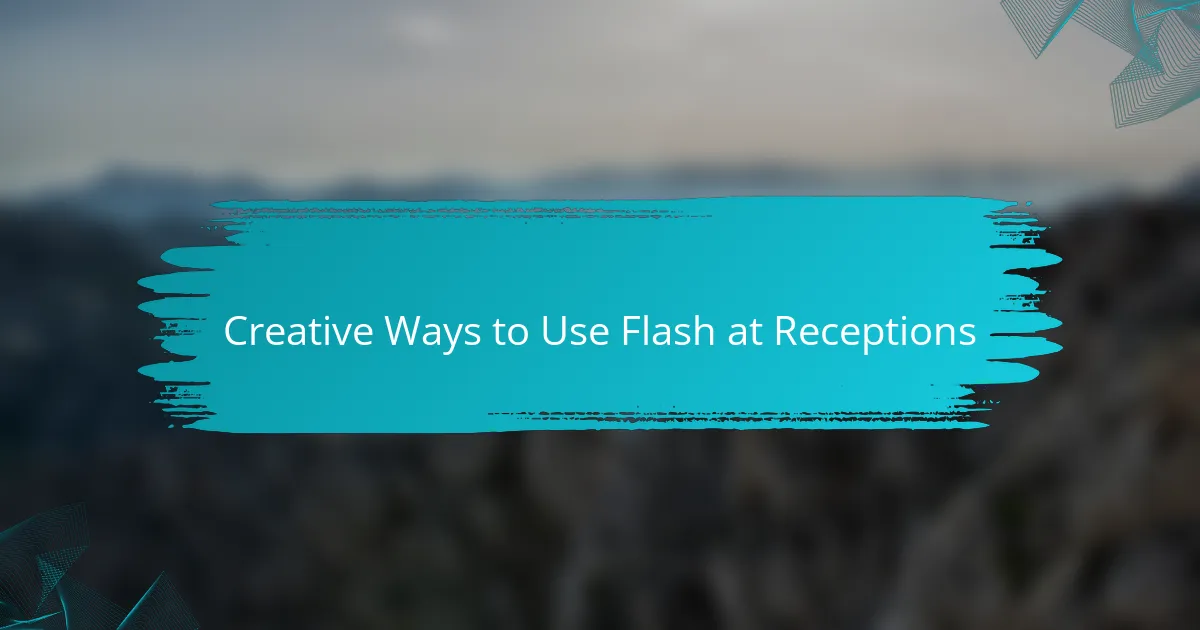
Creative Ways to Use Flash at Receptions
Using off-camera flash at receptions can truly elevate your wedding photography. I love experimenting with different angles and techniques to create unique atmospheres. For instance, when I shot a recent wedding, I positioned the flash behind the couple for their first dance. The soft glow created a dramatic silhouette that truly captured the emotion of the moment.
Another approach I find effective is bouncing the flash off walls or ceilings. This technique softens harsh light and provides a more flattering look. I remember one reception where I bounced the light off a nearby white wall, illuminating the dance floor beautifully while keeping the background subtly lit.
Here’s a comparison of two popular off-camera flash techniques:
| Technique | Description |
|---|---|
| Backlighting | Positioning the flash behind the subject to create silhouettes or dramatic highlights. |
| Bouncing Flash | Reflecting the flash off surfaces to create soft, diffused lighting effects. |
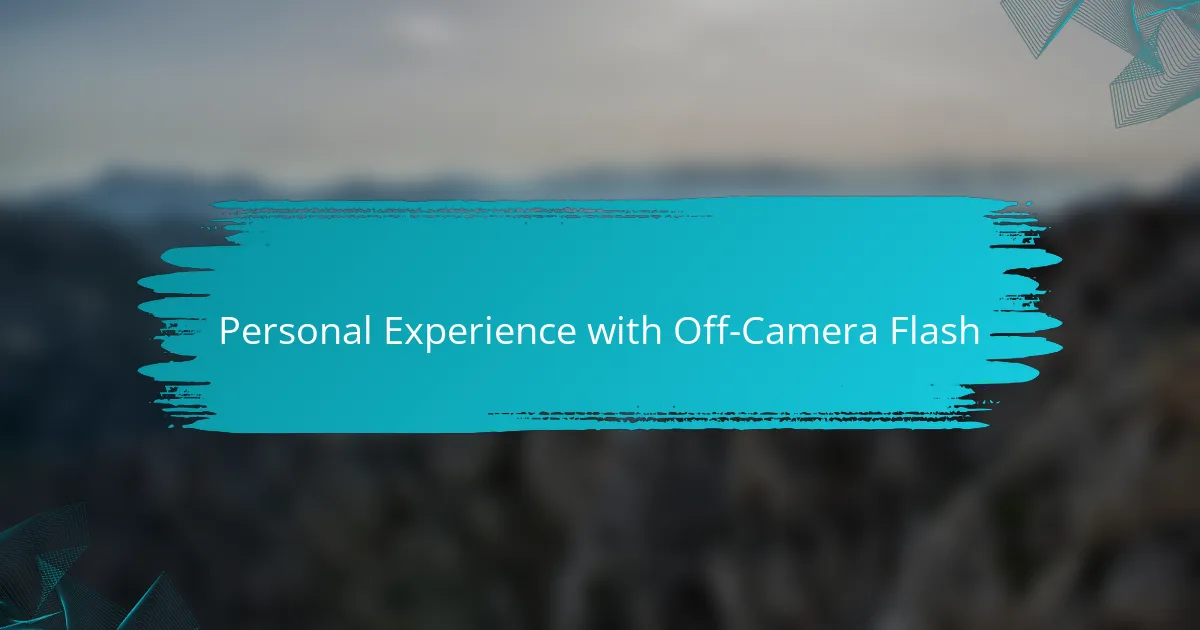
Personal Experience with Off-Camera Flash
Using off-camera flash at wedding receptions has drastically transformed my photography. I remember the first time I set it up—it was like flipping a switch that brought the scene to life. The ambient light can often be challenging, especially when the venue is dimly lit. By creatively using an off-camera flash, I captured the joy and energy of the dance floor in a way that reflected the couple’s personality.
One memorable moment was when the bride and groom shared their first dance. With the flash positioned to the side, I could illuminate them in a soft, flattering light while the dance floor remained slightly in shadow, adding depth and drama to the images. It felt incredible to freeze that magical moment, showcasing the emotion on their faces against a lively backdrop of family and friends.
In comparison to on-camera flash, off-camera flash not only gives you more control over lighting but also enhances the overall mood of the images. It’s an essential tool that can elevate wedding photography, making those cherished memories even more beautiful.
| Aspect | Off-Camera Flash | On-Camera Flash |
|---|---|---|
| Lighting Control | Greater control and creativity | Limited control, more direct light |
| Image Depth | Adds dimension to images | Flat lighting style |
| Versatility | Can be positioned at various angles | Fixed position, less versatile |
